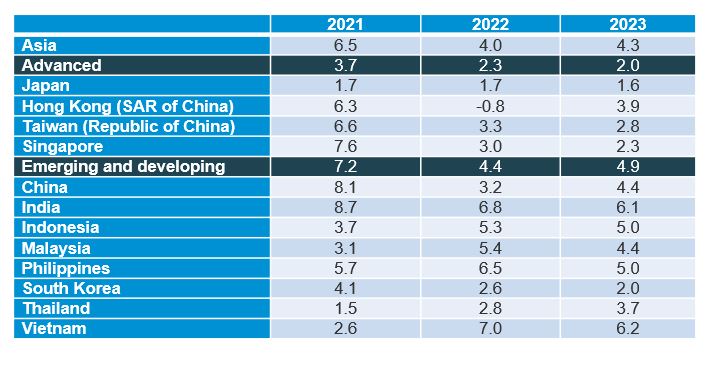- Home
- Asia: Economic overview
Asia: Economic overview
Although Asian economies are recovering from the impact of COVID-19, growth is expected to be gradual because of the unfavourable global economic climate. Inflation is above target for most Asian countries, though it is expected to drop in 2023. Asia remains, however, the most likely global region to experience economic growth.
Table 1. Real GDP growth in selected Asian countries

Source: IMF
China and India are both huge markets, each representing 18% of the world’s population (World Bank, 2021). The International Monetary Fund (IMF) expects India’s population to grow by just under 1% in each of the next five years.
Some Asian markets not only have large, growing populations (resulting in increasing demand) but are forecast to become wealthier. GDP per capita growth per year (2023‒2027) is forecast to increase by 5‒6% in China, India, the Philippines and Vietnam, and by 3‒4% in Malaysia and Thailand, according to the IMF. The Philippines is forecast to have one of the highest GDP per capita growth rates but has a relatively unequal distribution of wealth compared with the Asian countries shown in Table 1 (World Bank, Gini index).
Vietnam’s middle-income population growth is the highest in Asia. By 2030 its middle class is predicted to reach 95 million. Another positive is its relatively young population. In 2022, 8% of the population was 15‒29 years old. Children up to 14 years old comprised 23% of the population in 2022. So, in another 15 years, young adults will form a considerable proportion of Vietnam’s population, most likely with a considerable disposable income.
Continue reading about the Asian market
Where the opportunities lie, by country
Market access and barriers to trade

